Why is it important to write an effective marketing email?
Writing an effective marketing email is important because it impacts how your readers perceive your brand and whether they’ll engage with your message. A well-written email has high open rates, receives clicks on links within it and converts. An effective marketing email also:
Keeps your brand top-of-mind.
Builds a good reputation for your brand.
Drives traffic to your website.
How to write a marketing email
So, you know the benefits of writing an effective marketing email. Now let’s get down to business and learn how you can write one.
Define your objective
Before writing emails, you must define the objective of the email. Do you want to nurture leads, increase engagement, or drive sales. This helps you to decide the email content, structure, and type of email you want to send. Some of the marketing emails you can send include promotional emails, newsletters and transactional emails. A well-defined objective ensures your message resonates with your target audience and drives meaningful results that align with your long term business goals.
Define the tonality or voice of the email
Once you have decided the objective of the emails, now you must choose the tonality of the email. This is important because you don’t want to sound too far away from the style of the email like being too salesy and boasting your brand when you’re send an educational newsletter. It should also align with your brand voice and can be conversational or professional, depending on the context.
Research and understand your audience
It is important to create emails that address the interests, needs, and preferences of your audience, increasing the chances of engagement. Analyze demographic data, survey feedback, and purchasing behavior to personalize your emails and make your emails as personal and relevant as possible.
Create the draft
Now, create your first draft. Yes, it’s going to take multiple rewrites.
Use clear and persuasive language, ensuring your message is easy to read and understand. Include storytelling, create a narrative, or share your customer success to connect with readers. Make sure you convey your message concisely and include all important details. You can also use AI email writers to create a draft. You must also include key elements like a great subject line and a clear CTA.
If you want to dive deep into email copywriting, check the guide below.
💡 Related guide: Email Copywriting 101: Best Practices to Boost Conversions
5. Review and test
After you’ve written your draft, it’s very important to proofread your email copy for grammar, spelling, and clarity. Test the email format to check if it renders properly across different devices and email clients to ensure consistent appearance and functionality. You can also A/B test subject lines or CTAs to see what resonates best with your audience.
Once this is done, you can choose to schedule your email to send it at optimal time when your audience is most likely to open it or send it instantly. Also, it is important to track the performance metrics, such as open rate and click-through rates, to assess the effectiveness of your emails and make improvements if needed.
Decide the framework of the email
Email frameworks are of great help when you want to write an effective marketing email. There are multiple frameworks out there. You can choose the one that suits your needs the best. Here are some of them to choose from:
| Name of Framework |
Problem |
Description |
| PAS |
Problem |
Describe a pain point. |
|
Agitate |
Elaborate on the problem. |
|
Solution |
Provide the solution. |
| FAB |
Features |
Explain product features. |
|
Advantages |
Advantages of the features. |
|
Benefits |
How the recipients will benefit. |
| AIDA |
Attention |
Grab attention with a catchy statement. |
|
Interest |
Deliver information that interests the reader. |
|
Desire |
Highlight the benefits of your product. |
|
Action |
Lead to action of signing up or ordering. |
| 4Ps |
Picture |
Present a picture that catches attention. |
|
Promise |
Talk about what your product will deliver. |
|
Prove |
Provide customer testimonials and feedback. |
|
Push |
Encourage them to take action. |
| 5Gs |
Grab |
Grab attention. |
|
Glue |
Connect and relate with them. |
|
Give |
Provide a solution. |
|
Get |
Describe the end result of your solution. |
|
Grow |
Help them grow. |
You can read more about the copywriting frameworks in our related guide below.
💡 Related guide: How to Write Persuasive Email Copies for Higher Conversions
Best practices to write marketing emails that get read
Now, let’s come to some best practices that you must keep in mind when you’re writing marketing emails.
1. Write a perfect subject line
A subject line is an email’s first impression. Keep it short and give a hint of what’s inside the email. Use action words such as “Buy,” “Download,” and “Refer” to inform the reader what they need to do. Ask a question, include numbers, and be specific when writing email subject lines. This subject line from Blinkist creates urgency, and highlights the benefit with “save on 4 months”.
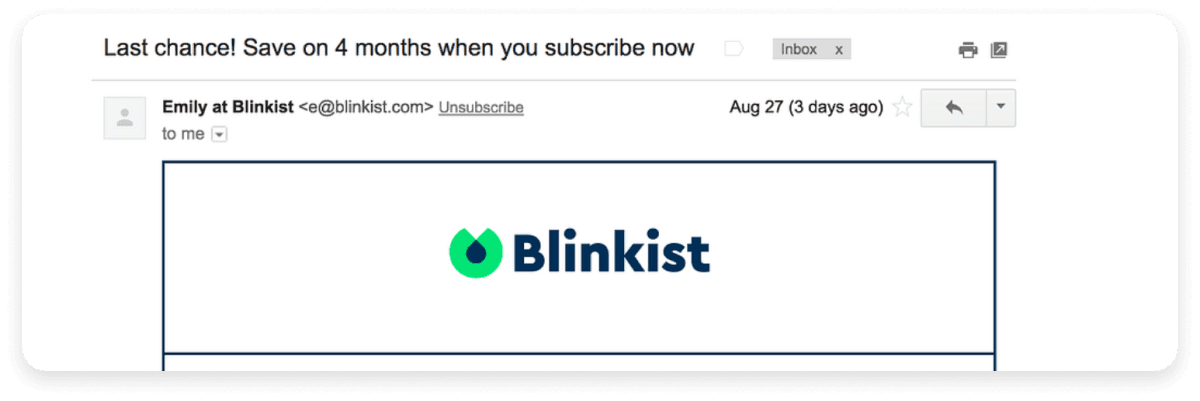
2. Personalize your email
Personalize your email greetings by using the recipient’s name to make them feel valued. Include personalized product recommendations based on the recipient’s past purchases or interactions with your brand.
This email from Lunch Money addresses the recipient directly and presents the recipient’s details which makes it look like this email was written specially for him, creating a sense of emotional connection and relevance.
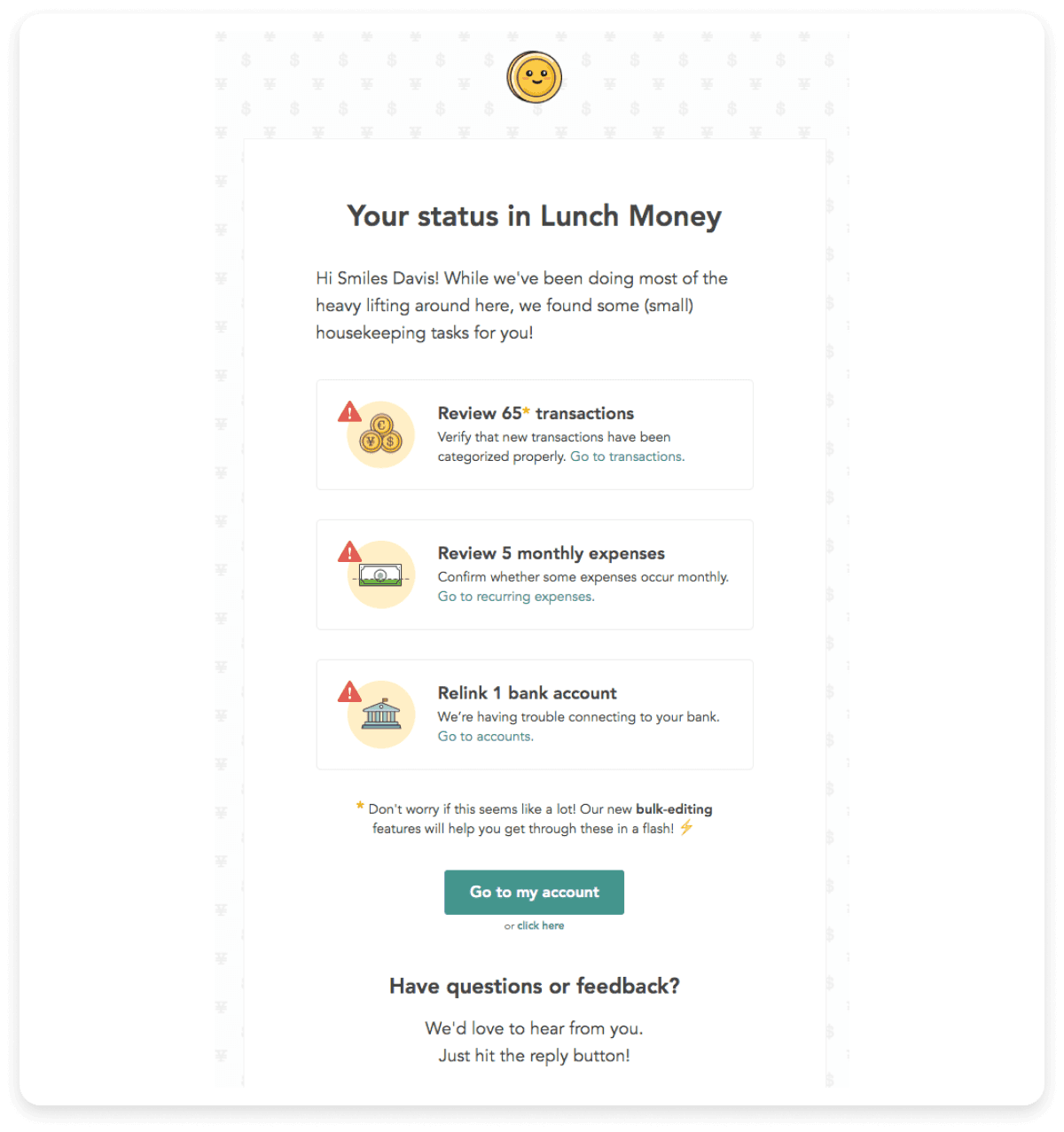
💡 Related guide: You Are Doing Email Personalization Wrong. Here's Why
3. Focus on benefits over features
When writing emails, it’s tempting to write about all the intriguing features your product or service offers. But what resonates with readers is how those features will make their lives better. Think about what’s in it for them and then write.
For example, you might write, “Get instant insights to make better decisions and increase your sales,” rather than saying, “Our software has a real-time analytics dashboard”. It’s not just about what your product does—it’s about how it solves a specific problem for your reader.
This email from Microsoft highlights the benefits users will receive if they use Copilot instead of what Copilot has to offer.
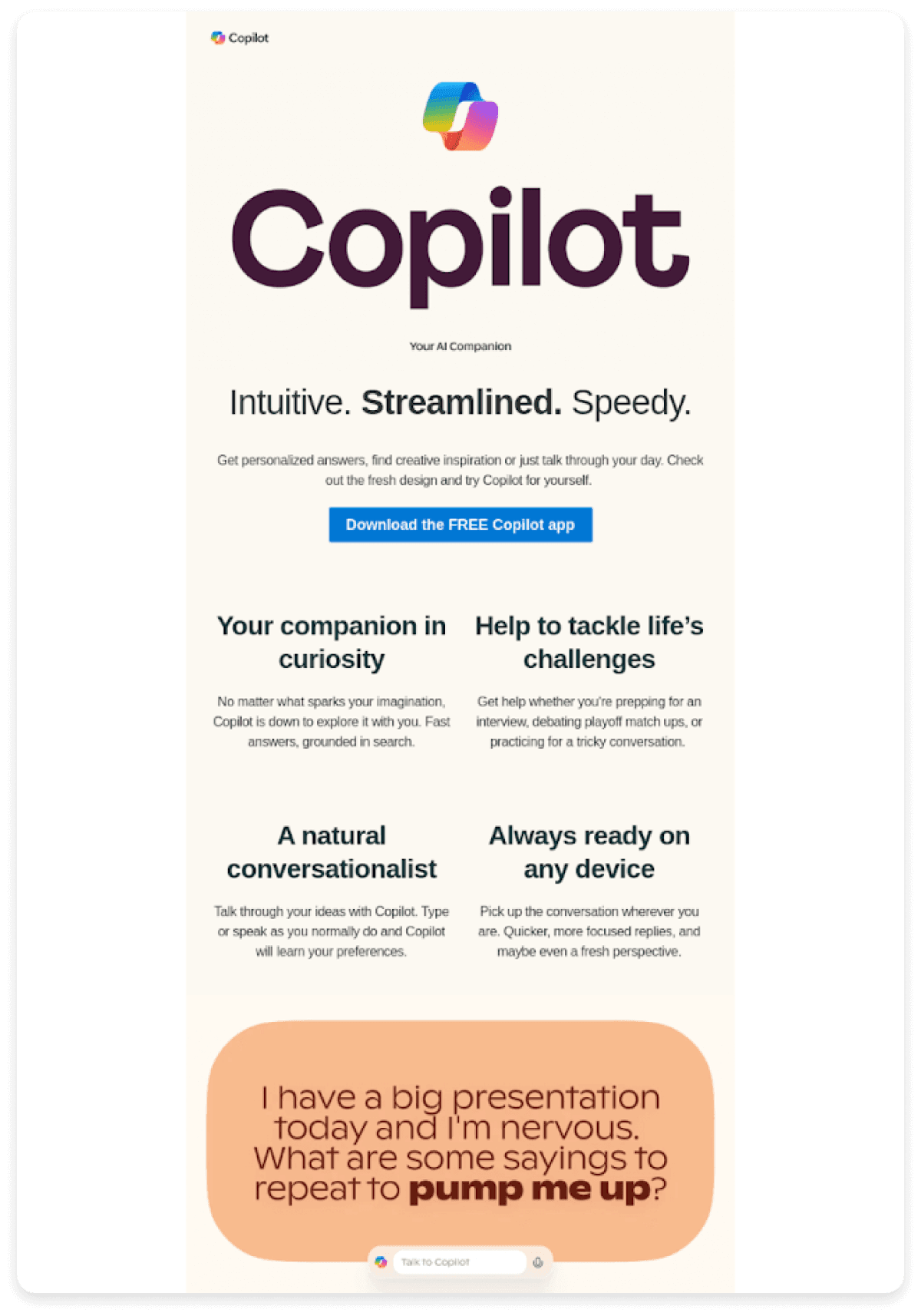
4. Include a CTA
A CTA (Call-to-action) helps you to guide your readers on what to do next. Do you want them to subscribe to your email newsletter? Or do you want them to check your website and shop? Include a clear CTA that aligns with your email’s goal. Here are some tips you must follow when creating CTAs.
Keep your CTA short.
Use action words such as “Buy Now”, “Sign Up”, “Download Now”, and so on.
Ensure it should stand out visually, encouraging the recipient to take the next step.
Highlight what the CTA will lead to - a subscription, a download or something else.

💡 Related guide: 100+ Email Call To Action Examples to Get More Clicks
5. Include testimonials and reviews
Include social proof (testimonials and reviews) in your email message to communicate what you want to tell them. This helps you build credibility and influence people’s decisions by showing that a lot of people made similar choices and were satisfied with them. You can display reviews, testimonials, and social media posts. This email from Blume highlights a customer testimonial to boost its credibility.
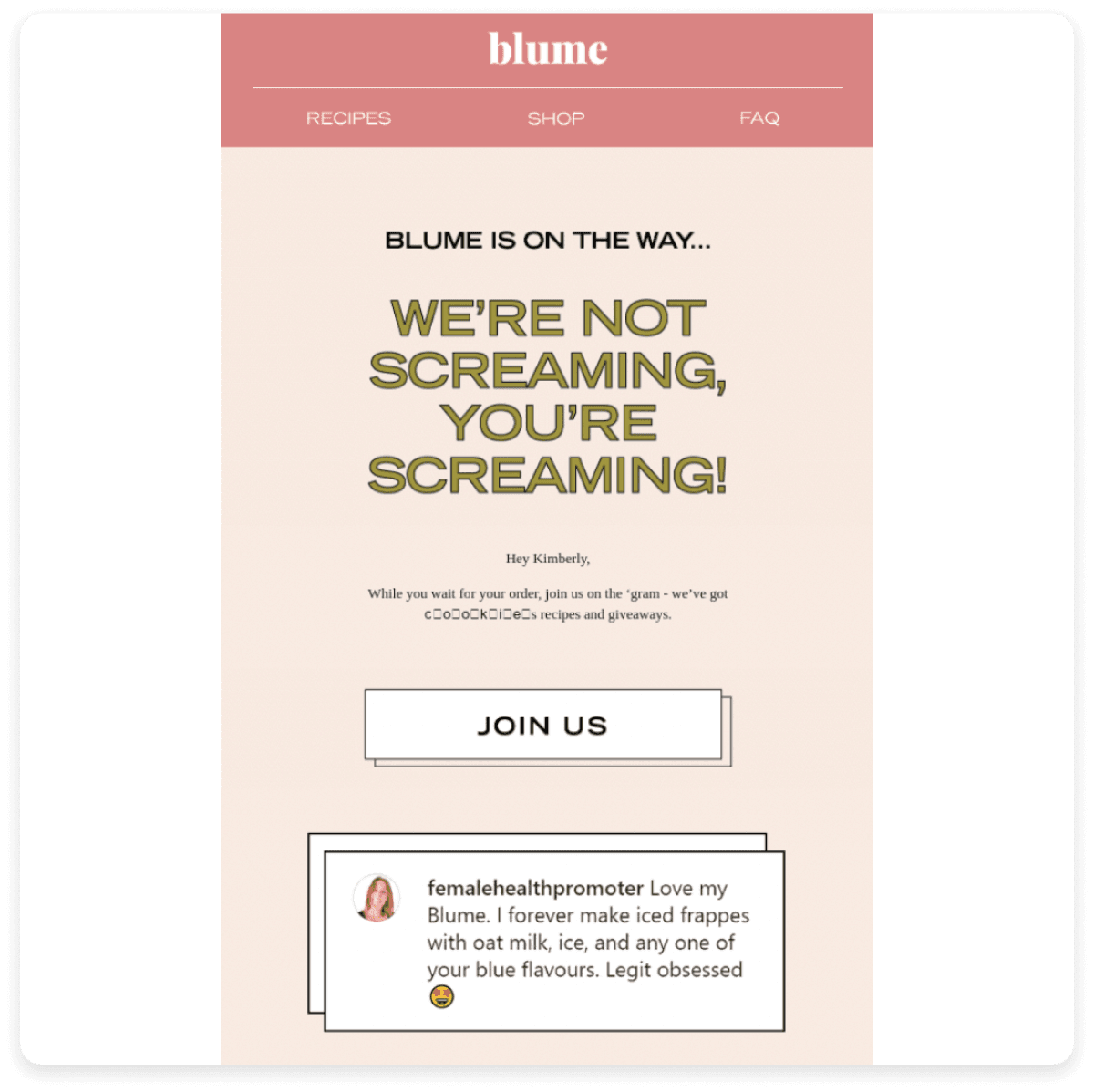
💡 Related guide: How to Use Social Proof in Email Marketing to Get More Sales
6. Highlight urgency and FOMO
Create a sense of urgency and FOMO to encourage your recipients to act quickly, else they will miss out on something really important.
For example, you can highlight that there are only 5 seats remaining for your exclusive workshop, creating a sense of urgency. You can create limited-time offers, give exclusive access to products and services, and include countdown timers to convince your readers to take prompt action.
This email from Clue effectively creates a sense of urgency. It promotes a 75% discount for the next 48 hours, encouraging recipients to take advantage of the limited-time offer.
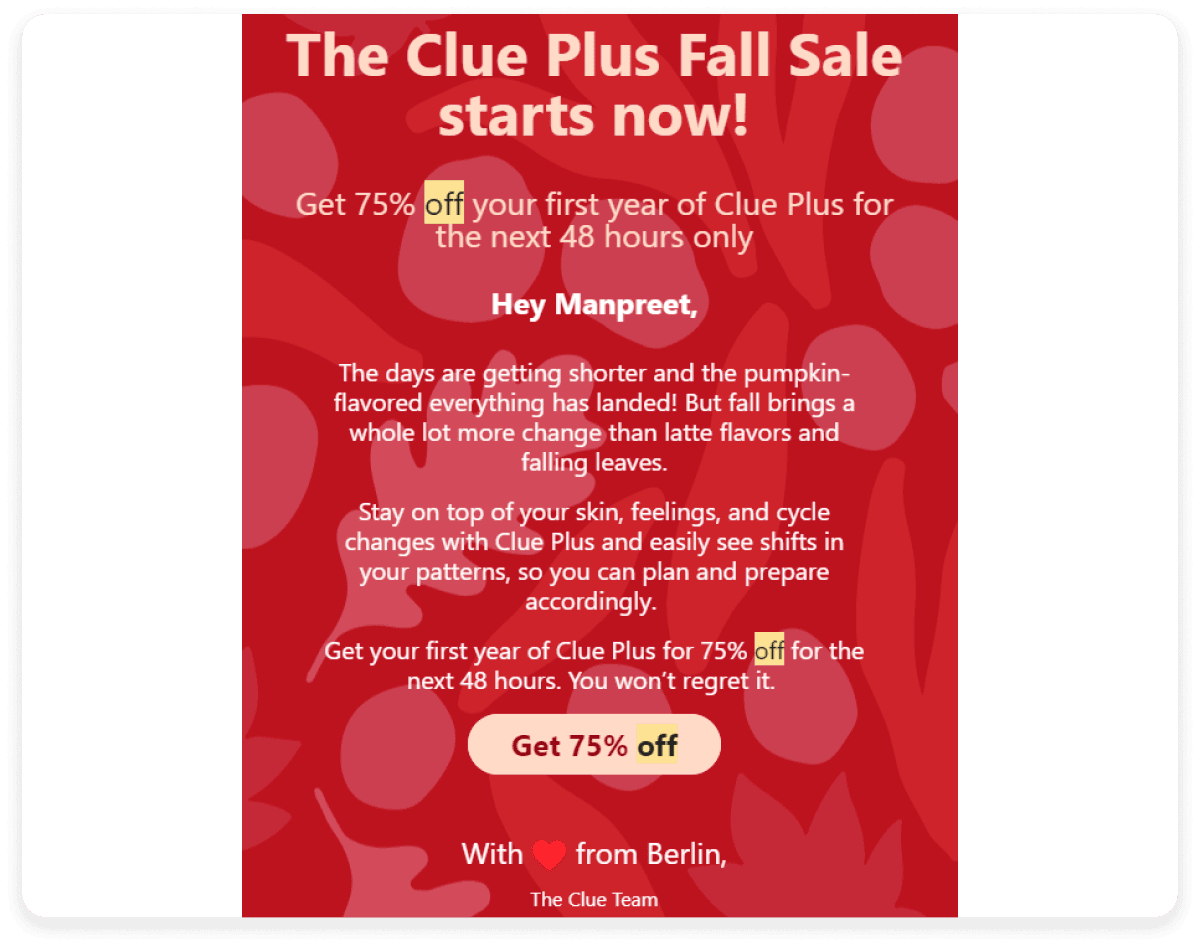
7. Keep it simple
When writing emails, find the perfect balance between being too brief or to long. As Joshua Reynolds said, “Simplicity is an exact medium between too little and too much”. Write your emails in a clear and concise language to convey your message without overwhelming the reader with too little or too much information.
8. Align messaging with the right segment and stage in the funnel
Personalize your email content according to your specific audience segment and their stage in the customer journey. It is important to find out who your potential customers are and where they stand in the stage funnel. Are they new leads, potential buyers, or repeating customers. For example, new subscribers might resonate with a welcome email while existing customers may engage with a email that highlights exclusive offers.
💡 Related guide: Getting Started With Email Segmentation To Send Targeted Email Campaigns
9. Choose a conversational tone
Write your emails in a conversational tone to create a personal connection with your readers. Here are some tips you must follow:
Start with a personalized greeting and use simple language.
Share personal anecdotes or experiences that are relevant.
Use contractions where needed and avoid formal phrases.
Ask questions to encourage the readers to respond.
Be authentic and share your opinions freely.
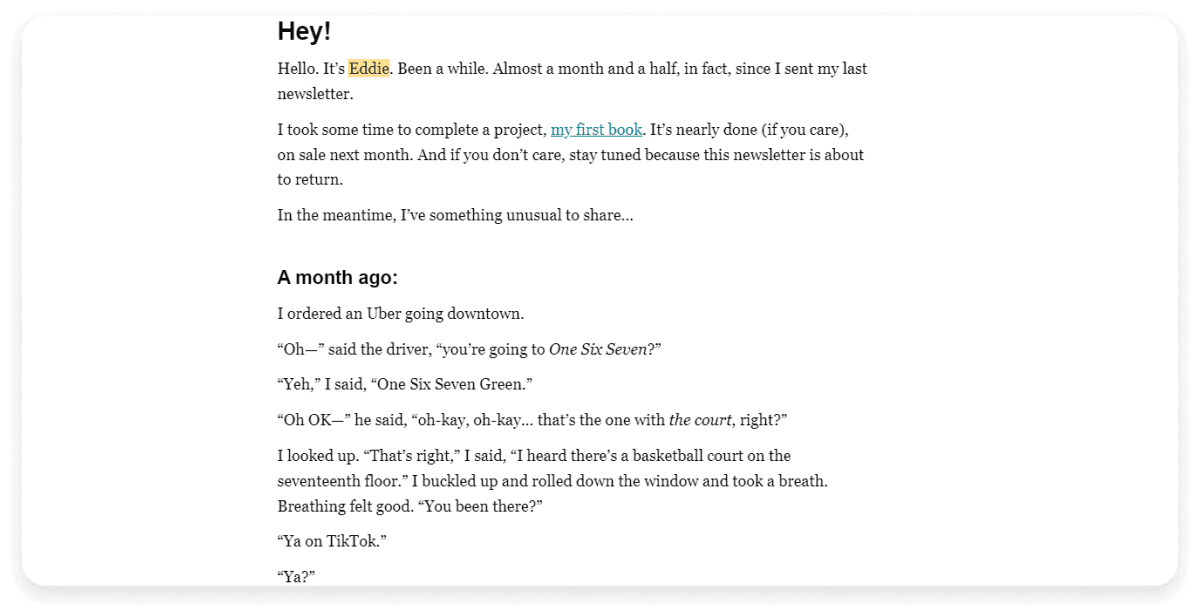
This email from Eddie Shleyner, a famous email copywriter, has a casual and conversational tone. He uses informal language to create a relatable vibe.
10. Incorporate storytelling
Rather than talking about your product features, share a story about how it helped people solve their problems.
Sharing stories helps you to connect with your readers, making your message relevant. Further, it helps them picture how your product can change their lives, which can lead to more purchases.
"Good stories surprise us. They make us think and feel. They stick in our minds and help us remember ideas and concepts in a way that a PowerPoint crammed with bar graphs never can.”
- Joe Lazauskas and Shane Snow, The Storytelling Edge
11. Write a strong opening line
A strong opening line in an email attracts the reader’s attention, sets the tone, and encourages them to read further. You can promise a solution, suggest your email contains valuable information, or solve a challenge.
 In the above email, the opening line “850M. That’s how many people you can reach on LinkedIn” works because it uses a big number to grab attention, highlighting LinkedIn’s vast reach, making readers curious about using the platform for their personal brand.
In the above email, the opening line “850M. That’s how many people you can reach on LinkedIn” works because it uses a big number to grab attention, highlighting LinkedIn’s vast reach, making readers curious about using the platform for their personal brand.
How to write and send emails with Mailmodo
You can use Mailmodo’s text editor to create visually appealing and interactive email templates without requiring coding skills. Here’s how:
Step 1: Go to Templates and click on ‘Create new template’.
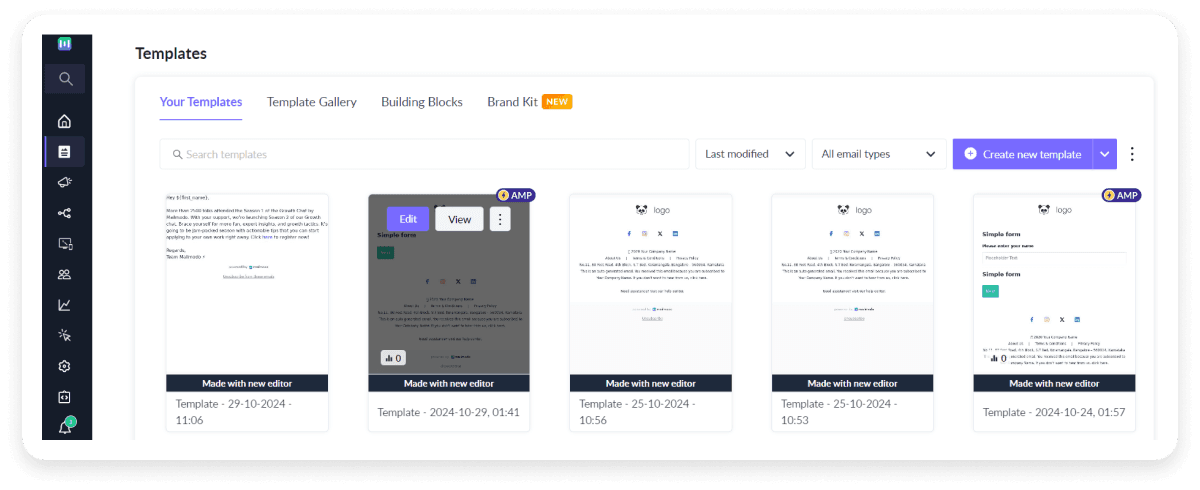
Step 2: Select ‘create text only template’.
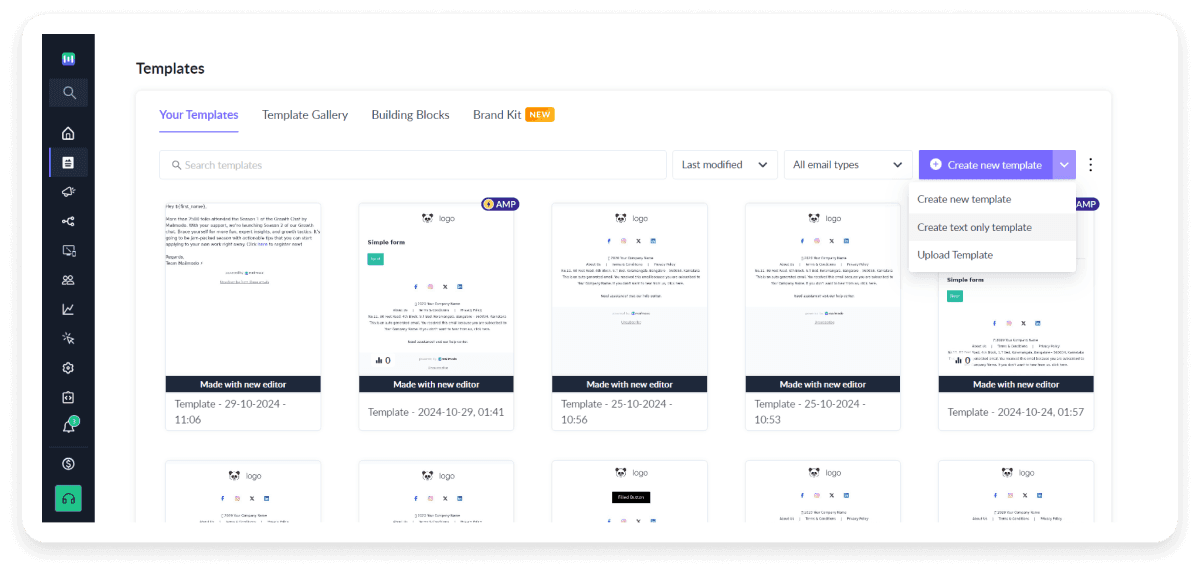
You will be directed to the editor window where you can create your email. You can also use personalize your email option to add personalization parameters or use AI to write and rephrase your emails.
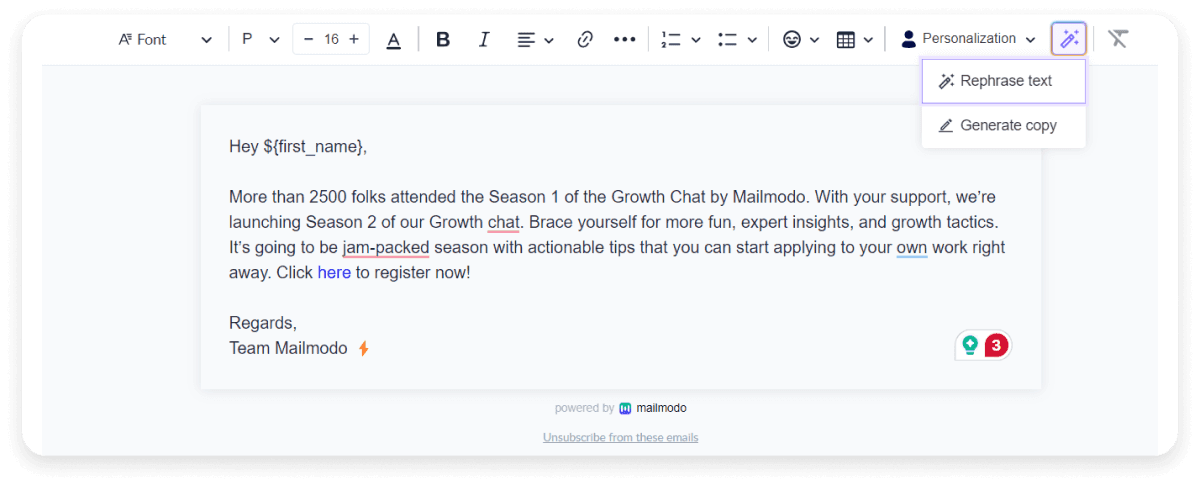
Create and send AMP emails without coding in minutes
Conclusion
By following these tips, you can create marketing emails that don’t just convince people to open them but also take the desired action. Remember, the key to a successful email is delivering value i.e., showing your readers you understand their needs. Create engaging, personalized content, and design interactive emails that not only look good but also drive great results for your business.









 In the above email, the opening line “850M. That’s how many people you can reach on LinkedIn” works because it uses a big number to grab attention, highlighting LinkedIn’s vast reach, making readers curious about using the platform for their personal brand.
In the above email, the opening line “850M. That’s how many people you can reach on LinkedIn” works because it uses a big number to grab attention, highlighting LinkedIn’s vast reach, making readers curious about using the platform for their personal brand.











